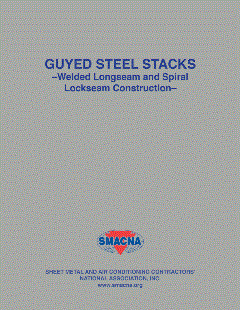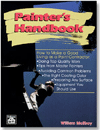First, if the bottom of the EIFS is right near the ground, run your hand around the bottom edge to see how it is terminated. Usually, it is backwrapped but sometimes the coatings are "wrapped" in some other way, or some form of embedded trim is used. The raw foam or the reinforcing mesh is not wanted to be felt. By the way, if it's troublesome getting close enough to the ground to see what's going on under the edge of the EIFS, invest in one of those telescoping "mirrors on a stick" to get a view.
Barrier and drainage
If the EIFS is the barrier type, the bottom edge is often sealed shut, usually by wrapping the edge in some manner and by using caulking. For EIFS with drainage, often embedded trim is used to finish off the edge. The trim has perforations on its horizontal leg to let the water out. But keep in mind this type of trim can also be used with barrier EIFS, although usually it has no holes.When the bottom of an EIFS comes down near a walking surface-such as a deck or a sidewalk-it should be kept above the surface. This is especially true if ponding water exists, as water can wick up and deteriorate the EIFS if the EIFS sits in the water. Also, if the ponding water freezes, it will expand during that process, and can sometimes exert enough force to shear the EIFS off its substrate.
EIFS should not be used below the ground. It is not a below grade insulation system. It simply does not hold up well in this application. It is not a below grade waterproofing system either and does not perform well in this role. If these types of capabilities are needed on a building, use materials that are intended for that purpose, not EIFS. When using EIFS near the ground, there are lots of issues to keep in mind. Many are common sense but if not heeded, can cause problems.
Termites can be a huge issue in some areas. Termites do not eat EIFS per se, nor are they attracted to it. But EIFS can be used as a highway from them to get to what they crave: wood-based products behind the EIFS, such as the framing and sheathing used in residential constructions. The southeast U.S. is a case in point, and if one thinks this is not really a problem, take a look at the building codes: In some areas, the minimum separation distance is 6 inches or more. I realize that having the EIFS start so far above grade looks terrible but it's better than having bugs in the building.
But it's not enough to just keep the EIFS above the ground: It also needs to be sealed-off at the bottom edge. This can present problems, from a number of sources.
For instance, frequently the EIFS foam overhangs the foundation wall. It's hard to keep a gap from not occurring between the foam and the sheathing due to variations in positioning the framing and the straightness of the concrete. Thus, a route for termites exists in the form of small gaps for them to travel through. The usual solution to this is to seal the gap shut with caulking. This is fine for barrier EIFS but what about EIFS with drainage? EIFS with drainage needs a gap to let the water out. That gap can take the form of a path for critters to get through. The moral: Use some type of trim to seal off the edge. It should have holes small enough to keep termites out but to let water through. Here's a thought on unique ways to deal with this issue: In Australia, where some termites are big enough to ride on, a type of J-mold-type trim formed of stainless steel mesh is used. It's durable, drains well, promotes drying of the wall and keeps bugs out. It also keys well into the basecoat, and is quite thin, thus allowing it to be embedded easily.
Along the same lines, sometimes wood-based sheathings overhang the foundation. This leaves the edge of the sheathing fully exposed. It's basically an invitation for a termite's meal. The key is to cover this exposed edge. This gets clumsy with EIFS with drainage, since the standard termination details for EIFS do not account for the extra thickness of the sheathing material. To keep termites at bay, it's a good idea to seal off this raw edge with a piece of light gauge galvanized flashing.
The presence of EIFS near grade creates other issues, unrelated to crawling life but related to "still life"-plants.
Ivy towers
Some species of plants-ivy and similar crawling plants, in particular-cling to the wall and will grow up it. In order to attach themselves to the wall, the plants send microscopic threads into the wall surface, the EIFS finish. These threads are not just glued to the surface-they are in it. The "plants" get into the surface look like tiny octopus tentacles digging into the finish. This is why, when vegetation is scraped off, those tiny, gnarly little buds remain attached to the finish. These remnants are virtually impossible to scrape away. This results in an unattractive surface appearance that can only be remedied by painting over it, which is hardly an inconspicuous repair method.Another source of problems at the grade relates to vegetation too, namely, it needs watering. It's not uncommon to use automatic sprinklers to keep the plantings healthy. The is fine for the plants but it's almost impossible to keep the water from also getting on the wall. This results in a wet wall, which encourages two types of conditions: mildew and stains. The mildew comes from providing moisture to the tiny microbes that naturally occur on the surface due to rain and wind. Hence, mildew starts growing. It also places water on the wall. But since not all water is clean, whatever unclean materials are in the water, such as dissolved salts and iron (a.k.a. rust) end up on the wall. This slowly builds up a film on the wall. The film is not just on the surface. Since the water slightly softens the finish, the minute particles get embedded in the surface. This makes these stains difficult to remove. Sometimes, these stains can be removed with topically applied specialty cleaners, but often they cannot be removed at all. The only guaranteed solution is to paint the EIFS, which will be visible.
The moral regarding plants: Try to get building owners to keep plantings away from the EIFS. It is tough sell, as close-by plantings look nice. This warning about having EIFS close to plants includes using EIFS as the finish alone on concrete planters. The other thing to keep in mind is that the vegetation-based staining is not an EIFS problem per se. Textured synthetic finishes, whatever they are applied on, will have the same problem.





Report Abusive Comment